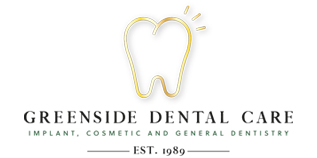An effective long-term solution to straightening your teeth and correcting your bite is orthodontics. Orthodontics is a subspecialty area in dentistry that focuses on aligning and straightening teeth using wires and brackets, applying gentle pressure to the teeth to move them into a particular position. The discipline has advanced over decades and today treatment is a lot faster and more comfortable than it was in the past. Here is an overview of orthodontics:
- Patients who have problems with their bite and the way their top and bottom teeth line up against each other are good candidates for orthodontic treatment.
- Impressions, photos and x-rays are taken at the start of treatment to determine the course of action.
- Brackets are bonded to individual teeth and wires clip onto them that gently guide the teeth into position over time.
- Good oral hygiene habits are essential during treatment and regular visits are required for check-ups and adjustments.
- Straighter teeth are healthier teeth, as there are no gaps for plaque to build up in over time.
- Having an attractive smile will have a positive effect on your confidence.
- Orthodontics is a long-term investment in your oral health.
- Thanks to fixed permanent retention you can be assured that your teeth won't move after treatment is completed.
Are your teeth stained, chipped, or not aligned on top of each other? Veneers are a good treatment option to consider because they look like natural teeth and don't require a major procedure. Veneers can also be used to close small gaps when braces are not suitable. If one tooth is slightly out of position, a veneer can sometimes be fitted to bring it into line with the others. Here is how they work:
- A veneer is a very thin, tooth-coloured piece of porcelain (like a false finger nail, but more durable) that is bonded on top of your own tooth.
- Based on your needs, the shape and size of the veneers can be adjusted to make your teeth overall look longer and or closer together.
- You can have just one veneer fitted or a whole set, known as a smile makeover.
- Simple and quick solution to improve the cosmetic appearance of teeth.
- Long-lasting smile enhancement.
- Natural-looking restoration.
A crown is a type of dental restoration used to fix teeth that have been broken, weakened by decay or contain a very large filling. Here is how it works:
- An impression is taken of the tooth that needs restoring.
- A crown is made in the dental laboratory to fit the tooth precisely and match the neighbouring teeth.
- The tooth is then prepared and the crown fitted securely on top.
A crown could be a good solution for you if you have some discoloured fillings and would like to improve their appearance. Crowns can be used to replace these to give you a more appealing smile. Additionally, if you have had root canal treatment you will need a crown to protect or cap the restored tooth, allowing you to eat and bite down on it as if it was a real tooth. Crowns are also used to anchor a bridge or denture firmly in place in the mouth.
- Strengthens remaining tooth structure.
- Natural-looking restoration.
- Functions like a real tooth, so you can bite and chew as usual.
















